1. Feedback
1.1. Positive
1.1.1. With social media being so prevalent in our information society, consumers are able to look up reviews for just about everything
1.1.2. Positive feedback can be used to market a good and reach more buyers
1.2. Industry
1.2.1. The type of industry of the seller will determine the importance of positive feedback
2. Marketing
2.1. Social Media
2.1.1. Social Media outlets such as Facebook, Yelp, Twitter, and Instagram are ways to reach consumers
2.2. Types of Marketing
2.2.1. Sellers need to select the proper type of marketing strategy for the good they are using. They can add banners or pop-ups on webpages.
2.2.2. Free trial periods can be used to market goods
3. Freemiums
3.1. Positives and negatives to offering a free good
3.1.1. Pro: It can be used to bait the consumer to the seller and entice them to purchase more
3.1.2. Negative: if a consumer is good with just the freebie, they may not purchase the good
3.2. Sellers offer a free good to entice buyers to pay for a premium or a subscription
4. Pricing Strategy
4.1. Site Licensing
4.1.1. Charging a flat cost for an unlimited number of licenses or access to a good
4.1.1.1. Benefits buyers without a fixed need
4.2. Unit Pricing
4.2.1. Charging per license (per unit)
4.2.1.1. Benefits buyers with a fixed need
4.3. Pricing strategy is determined by the type of consumer the seller is targeting
4.4. Type of strategy dependent on competition in the market
4.4.1. Multiple sellers of the same good with the same strategy could lead to neither being profitable, unless they each target a different niche consumer
5. -opoly
5.1. The seller's place and control over the market impacts their overall profitability
5.2. Mon-
5.2.1. Monopolies allow the seller more privilege in terms of pricing strategy, marketing, and customer base
5.3. Olig-
5.3.1. Competition between multple sellers
5.3.1.1. Positive feedback can help a seller set themselves apart
5.3.1.2. Sellers affect each other
6. Lock-in
6.1. Network Externalities are when one network affects another without any cost benefit
6.1.1. A growing network could cause another to lose business
6.1.2. reviews and marketing across social media can cause a network to grow or shrink
6.2. Switching costs - Consumers will consider the amount of lock-in a good has and the costs associated with switching should the desire arise.
7. Migration
7.1. Evolution strategy plans for future advancements
7.1.1. Future planning with lock-in in mind
7.2. Technical obstacles require sellers to build a good that can keep up with advances while also working with what is currently available
7.2.1. Phones for example are build with faster/better and the manufacturers provide updates with new advances until the phone is not able to support the software upgrades
